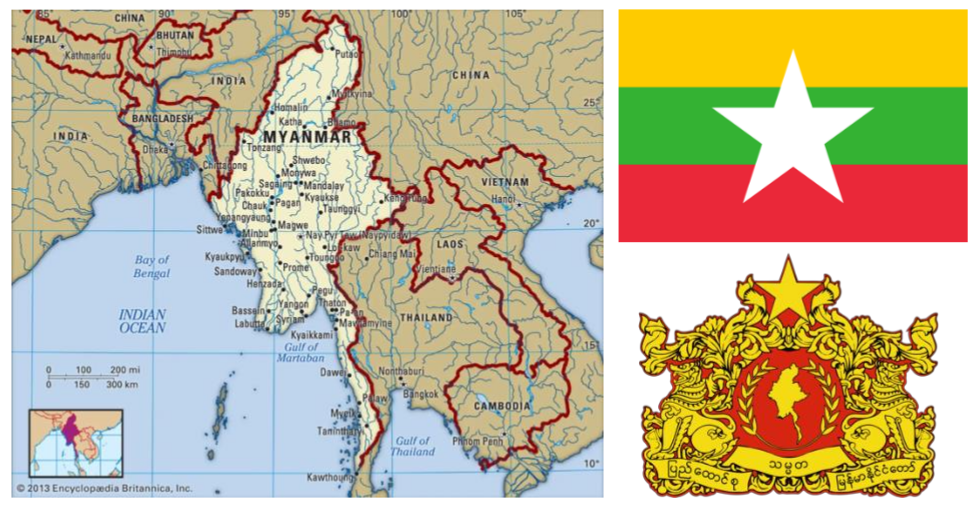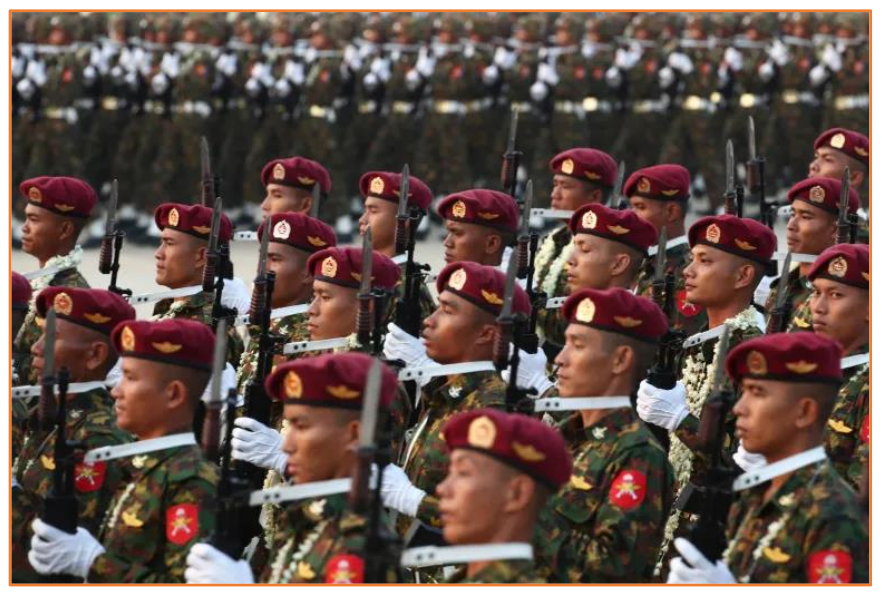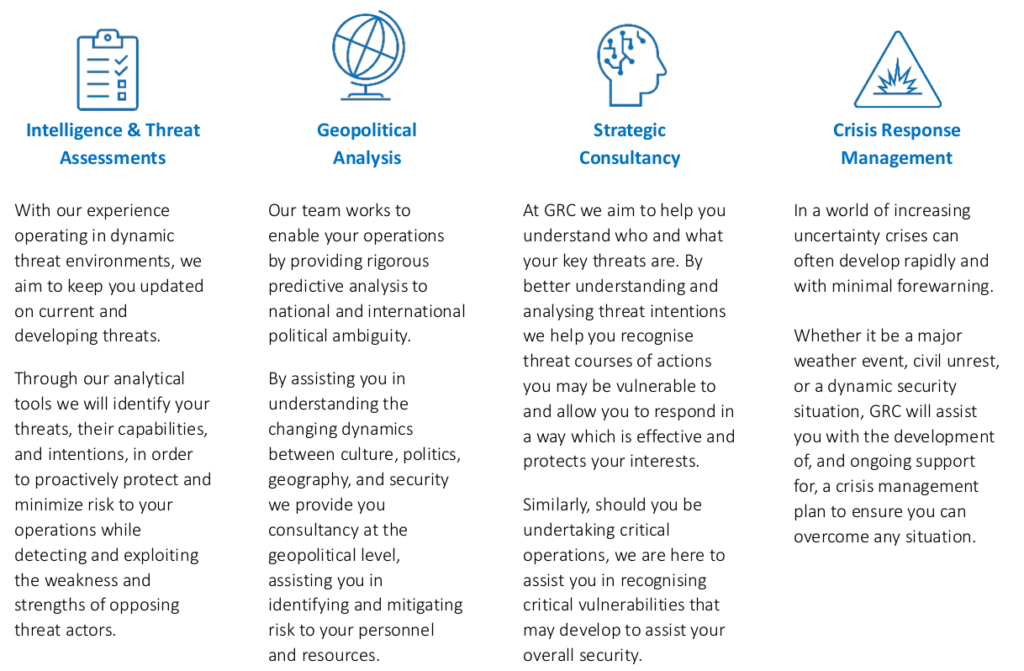Address
304 North Cardinal St.
Dorchester Center, MA 02124
Work Hours
Monday to Friday: 7AM - 7PM
Weekend: 10AM - 5PM


Protecting people, assets and information

Navigating NZ-Myanmar Geopolitical Risk: Should NZ decline visas for Myanmar’s junta officials and block their participation in ASEAN talks in Wellington? What’s the context and what’s at stake? And how is China influencing the situation and will this change NZ’s strategic calculus? 🇳🇿🇲🇲🇨🇳
GRC Intelligence has produced a Myanmar Profile detailing the history of the civil war, the current situation, and the influence of major stakeholders in the geopolitical arena. NZ’s risk is a reputational one that will ripple through our ASEAN partners and certain circles in the UN.
1. As a staunch defender of human rights on the global stage, does NZ maintain foreign policy procedure established in 2021 (no engagement) and decline the visas? Or;
2. Does NZ take an ‘honest broker’ role that facilitates engagement with the junta but risks legitimising their military rule and alienating ASEAN?
3. Other geopolitical manoeuvres?
Protests: ‘About 400 members of Nelson’s Myanmar community and allies took to the streets on Saturday to show their outrage and call for the visas to be declined. Co-organiser of Nelson’s protest, Mwe Mwe Ein Htein, said the visas signalled legitimacy to the illegitimate government.’ (Stuff)
Commentary: ‘Opposition MP Phil Twyford said that’s a cop out and New Zealand could decline visas for the representatives as Australia did with a meeting held in Melbourne last month. “This brutal military regime has no legitimacy and they desperately crave the kind of recognition that an international meeting taking place in New Zealand would give them.”‘ (1news)
Advice given and recommendations made do not constitute a warranty of future results by any company in the Global Risk Consulting Group of companies (‘GRC’) nor an assurance against risk. Recommendations made are based on information provided by the client and other information available at the time of writing. No express or implied warranty is given in respect of any judgement made or to changes or any unforeseen escalation of any factors affecting any such judgement.
Documents are for the benefit of the client only and may not be disclosed to any third parties without the prior written consent of GRC; such consent not to be withheld unreasonably. The client agrees to indemnify Global Risk Consulting against any claims and any resulting damages that may be caused by unauthorized disclosure of such documents.
GRC standard terms of business for the relevant service apply – as attached or otherwise available on request.
Global Risk Consulting (GRC) Group Geopolitical Analysis

Figure 1: Myanmar Map, Flag, and State Seal of the National Unity Government.
___________________
1 A prime example of this was Aung San Suu Kyi’s refusal to condemn the Tatmadaw’s decision to cleanse the Rakhine state of Rohingya inhabitants in 2016. Following a flare up of sectarian tensions between the Buddhist majority and the Muslim Rohingya earlier in the decade, the Tatmadaw began a campaign of destroying Rohingya townships and forcing nearly one million people to flee across the border to Bangladesh.
8. In 2020 the national election garnered the NLD even more votes than in the 2015 election. This proved too much for the Tatmadaw, who promptly launched another military coup and re-prisoned Aung San Suu Kyi. Mass protests were sparked across the country, with many government workers, doctors, teachers, and other civilians boycotting participating in the economy or cooperating with the military government.
9. The deposed civilian government largely fled into exile and formed the National Unity Government (NUG), maintaining themselves as the legitimate representatives of the country. The NUG has also established an armed militant wing labelled the People’s Defence Force (PDF). In contrast to many of the EAO, the PDF accept Bamar peoples into their ranks, maintaining a goal of being a coordinated multi-ethnic, all-of-nation fighting force to overthrow the Tatmadaw.
10. The PDFs aligned themselves with several sympathetic EAOs, whose populations have increasingly begun to support the idea of a federalised and inclusionary state. While the PDF initially lacked funding, military experience, and adequate firepower, their coordination with sympathetic and experienced EAOs has rapidly stabilised their position against the
Tatmadaw.
11. Unwilling to risk returning to an economically backward and oppressive government has motivated many EAOs beyond merely supporting the PDF, with several EAOs breaking their ceasefire agreements and carrying out military operations against the Tatmadaw again.
12. The Tatmadaw has since felt the strain of fighting on multiple fronts. 46% of Tatmadaw’s most recent budget was spent on personnel costs, where low morale, high defection, and high corruption appear to massively sap its effectiveness. Another 32% of the budget is spent on operations and procurement. Much of this funding includes sourcing warships, anti-air systems and airpower from China and Russia, with seemingly little going towards effective ground force equipment.

Figure 2: Young members of the PDF – Al Jazeera 2024
https://www.aljazeera.com/news/2024/2/1/blood-and-sweat-myanmar-resistance-fights-to-overturn-military-coup
13. Both domestic civilians and international businesses have engaged in boycotting Tatmadaw’s two major multi-business conglomerates, MEHL and MEC. This, in addition to COVID-19, has disrupted natural resource harvesting, and denied cross-country trade access, limiting the Tatmadaw’s ability to effectively fund their forces.
14. Between 2020 and mid-2023, the PDF and various EAOs made some ground against the Tatmadaw in respective geographic areas. The Tatmadaw made very few gains and have largely been on the defensive.
15. While this was occurring, an already imperfect relationship with China has been further strained by the Tatmadaw’s inability and unwillingness to reign in Chinese crime syndicates operating in the border towns, primarily Laukkaing. The Chinese state media has stated that more than 100,000 people in Myanmar are involved in telecom scams daily. In addition to this, the criminal syndicates run kidnapping, illicit prostitution, and gambling rings.
16. Until recently, several of the towns were run by the Myanmar Border Guard Forces (BGF). Officially under the command of the Tatmadaw, the BGF employs local minority personnel, and enjoys a degree of independence from the centralised government. Control of these towns is lucrative for both the Border Guard Forces and the centralised Myanmar
government, as hefty bribes are paid to them by the criminal syndicates for tolerance of their activities. The inability of the Tatmadaw to reign these syndicates in appears to have caused China to tacitly give allowance to the EAOs and PDF to take control of the situation.
17. China has no shortage of influence in the area. It is one of the few cooperative partners the Tatmadaw has left. However, despite this apparent alliance, China heavily funds, arms, and influences the United Wa State Army, a 20,000 strong EAO in Shan State, who is actively engaged against the Tatmadaw.
18. On the 27th of October 2023, an alliance of three EAOs 2 (dubbed the Three Brotherhood Alliance) together with the PDF launched Operation 1027. The operations and town seizures have effectively deprived the Myanmar government of most of its Chinese border access in Shan State. The Tatmadaw control of border crossings to China, which they
rely heavily on for military supply, is now limited to approximately six out of nineteen border crossings points, with their access to the few they control extremely limited due to geographic, logistic, and military issues. The operation is unprecedented, as it’s the first time since the 2020 coup that multiple EAOs have coordinated their efforts with a goal of overthrowing the Tatmadaw, who seem to not be able to provide an effective response.
19. Several other EAOs across the country have begun launching offensives of their own. Some in conjunction with the PDF, and some as opportunistic measures. The Karenni EAOs located in the east near the Thia border claimed to have downed a Tatmadaw fighter jet; the Chin EAOs and the PDF seizing one of the few Indian border crossings. On paper, the various EAOs and PDF in Myanmar claim to field over 200,000 soldiers. In comparison, the Tatmadaw
contains 150,000 total personnel and 19,000 in reserve, and while mandatory conscription was announced on February 10 2024, it is yet unknown how effective this will be in bolstering Tatmadaw numbers in the face of mass defections.
20. The key to the shift in military power hinges on the motivation and level of cooperation of the EAOs and PDF. The EAOs have historically served the singular purpose of protecting the interests of their respective ethnic groups and little more. When unified and coordinated, even the smaller EAOs can make gains against the Tatmadaw.
21. Recently, the Tatmadaw’s waning strength presented an opportunity for the EAOs to curry favour with China. Since October 2023 several EAOs, encouraged by China, have launched coordinated attacks against the crime syndicates in Laukkaing and at the end of January 2024 the remaining three leaders Bai Suecheng, Wei Chaoren, and Lui Zhengxiang
were handed over to China. The EAOs are likely capitalising on China’s dissatisfaction with the Tatmadaw propping up activities in Laukkaing and may look for more opportunities to develop a relationship with their largest and most influential neighbour in the coming months as they look to consolidate their gains.
___________________
2 The Three Brothers Alliance consists of: the Arakan Army, Myanmar National Democratic Alliance
Army, and the Ta’and National Liberation Army

Figure 3: Myanmar hands leader of crime syndicate back to China – BBC 2024
https://www.bbc.com/news/world-asia-china-68150555
22. The Tatmadaw’s coup and ongoing human rights violations pose an ‘elephant in the room’ for members of the Association of Southeast Asian Nations. While adhering to various degrees of democracy and human rights commitments themselves, most ASEAN members view the questionable legitimacy of the Myanmar government and its international unpopularity as a sore spot for the group. Their inability to do more than diplomatically nudge the Tatmadaw has demonstrated their limited willingness or possibly effectiveness as a group on the world stage. Timor Leste has even declined acceptance into ASEAN after a decade long application, on the grounds that ASEAN had not done enough to convince the Tatmadaw to end their campaign.
23. Highest on China’s regional wish list are orderly and cooperative neighbours. Having their requests for judicial cooperation snubbed by a far less powerful neighbour has drawn its ire. Second on China’s wish list is strong trade and a healthy export market. China will likely flex its political muscle as much as necessary to achieve the former without necessarily having
to give up the latter. Ultimately, China publicly maintains a broad policy of non-interference in other nations’ domestic issues. Out of principle, China likely doesn’t care whether the Tatmadaw or NUG reign as the government in Myanmar, as long as it gets its way in areas that directly impact China. If the EAO and PDF prove able to cooperate with China to its satisfaction, China might continue its recent policy of implicit support or potentially allow a further flow of much needed modern arms through the United Wa State Army into the hands of the PDF and its allies.
24. With few states willing to cooperate with them, China’s tolerance of the PDF and EAO likely isn’t enough to change the Tatmadaw’s desire for Chinese support. If anything, it may make the Tatmadaw think twice next time about not prioritising the wants of China. The Tatmadaw’s policies in the previous decade have shown a general willingness and tolerance
for some degree of power sharing. Unfortunately, there’s not enough overlap with any other internal stakeholders for a satisfactory and stable situation. A degraded economy, broad military losses, and a status as an international pariah are certainly not making it comfortable for the Tatmadaw to rule. It’s not a position the Tatmadaw have been historically unfamiliar with, but the sheer instability of the country means that the Tatmadaw will never get to rule with an iron fist for as much or as long as they want.

Figure 4: Tatmadaw Armed Forces Day – Al Jazeera 2024
https://www.aljazeera.com/news/2024/3/26/backs-to-the-wall-myanmar-military-prepares-to-mark-armed-forces-day
25. In a complex nation with ever changing alliances, groups, and dynamics, it’s not easy to predict the future life of the National Unity Government or its People’s Defence Forces. The PDF’s willingness to recruit large numbers of Bamar people into the civil war against the government and its coordination with any EAO willing to share their goals has posed a significant threat to the Tatmadaw. Despite recent gains, it’s unlikely that the PDF will be able to muster enough force and momentum to topple the government militarily. The largest towns seized by the PDF so far only contain between 15,000 and 50,000 people. It’s still a far cry from cities of several hundred thousand in the Bamar heartland, where EAO allies may be less willing to operate due to limited interests. If the PDF continues to build effectiveness and entrench themselves as a unifying force across the country, they might be able to force the Tatmadaw into the worst military situation it’s ever experienced.
26. With such a wide diversity of EAO across Myanmar, it’s difficult to paint them with any brush of singularity. Some have historically allied with the Tatmadaw, waging war on its behalf in exchange for de facto autonomy. Others have willingly abided by ceasefires and attended numerous talks with the Myanmar government to negotiate a degree of autonomy. Some EAO clash with other ethnic groups, and even their own, for control of territory and influence. There’s been a general trend in recent decades of EAO moving away from their original goals of independence towards a federated model with delegated authority. This development is evidenced by widespread support for Aung San Suu Kyi’s National League for Democracy, even in minority areas with ethnicity based political parties. While the EAO may not be overly willing to march armies against Bamar cities, their coordination may deprive the Tatmadaw of any remaining access and power they have near the country’s borders.
Applying proven gold-standard methodology, Global Risk Consulting (GRC) Group‘s intelligence services specialise in providing bespoke intelligence solutions to inform you of current and developing threats and opportunities to your operations, and to provide expert knowledge to allow you to make informed decisions.
Intelligence is key to understanding the risks that threats pose to your interests and, by utilising a variety of products, GRC provides a wide range of intelligence services to advise and assist you in understanding those risks. Services include:
